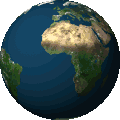|
Central Eastern
Europe 



STUTTGART 
Stuttgart is located on the Neckar river in
a fertile valley locally known as the "Stuttgart Cauldron". 
Stuttgart is an hour from the Swabian Jura and the Black Forest, and its urban area has a population of 609,219 making it the sixth largest city in Germany.  Stuttgart is also a transport junction, and possesses the sixth-largest airport in Germany, where companies such as Porsche, Bosch , Mercedes-Benz, Daimler AG, Dinkelacker, and others are headquartered there. 
Stuttgart is unusual in the scheme of German cities. It is spread across a variety of hills (some of them covered in vineyards), valleys (especially around the Neckar river) and parks. 

Stuttgart Baden-Wurttemberg july 2017

Stuttgart is a city with a high number of immigrants. According to Dorling Kindersley's Eyewitness Travel Guide to Germany, "In the city of Stuttgart, every third inhabitant is a foreigner." 
Stuttgart, often nicknamed the "Schwabenmetropole" (English: Swabian metropolis) in reference to its location in the centre of Swabia and the local dialect spoken by the native Swabians, has its etymological roots in the Old High German word Stuotgarten, or "stud farm", because the city was founded in 950 AD by Duke Liudolf of Swabia to breed warhorses. 
At the center of Stuttgart lies its main square, Schlossplatz. As well as being the largest square in Stuttgart, it stands at the crossover point between the city's shopping area, Schlossgarten park which runs down to the river Neckar, Stuttgart's two central castles and major museums and residential areas to the south west. 
Königstraße, Stuttgart's most important shopping street which runs along the northwestern edge of Schlossplatz, claims to be the longest pedestrianized street in Germany. 
Stuttgart, Baden-Wurttemberg, Germany july 2017. 
Stuttgart, Baden-Wurttemberg, Germany july 2017. 
Stuttgart, Baden-Wurttemberg, Germany july 2017. 
Stuttgart, Baden-Wurttemberg, Germany july 2017. 
Stuttgart, Baden-Wurttemberg, Germany july 2017. 
Stuttgart, Baden-Wurttemberg, Germany july 2017. 
Stuttgart, Baden-Wurttemberg, Germany july 2017. 
Stuttgart, Baden-Wurttemberg, Germany july 2017. 
Stuttgart, Baden-Wurttemberg, Germany july 2017. 
Stuttgart, Baden-Wurttemberg, Germany july 2017. 
Stuttgart, Baden-Wurttemberg, Germany july 2017. 
Stuttgart, Baden-Wurttemberg, Germany july 2017. 
Stuttgart, Baden-Wurttemberg, Germany july 2017. 
Schillerplatz, Stuttgart, Baden-Wurttemberg, Germany july 2017. 
The Stiftskirche (Collegiate Church), dates back to the 12th century, but was changed to the Late Gothic style in the 15th century and has been a Protestant church since 1534. 
Stuttgart, Baden-Wurttemberg, Germany july 2017. 
Stuttgart, Baden-Wurttemberg, Germany july 2017. 
Stuttgart, Baden-Wurttemberg, Germany july 2017. 
Stuttgart, Baden-Wurttemberg, Germany july 2017. 
Stuttgart, Baden-Wurttemberg, Germany july 2017. 
Stuttgart, Baden-Wurttemberg, Germany july 2017. 
Schillerplatz is a square in the old city centre of Stuttgart, Germany named in honour of the German poet, philosopher, historian, and dramatist Friedrich Schiller. 
Schillerplatz stands to the south west of Stuttgart's main square, Schlossplatz. 
Schillerplatz, Stuttgart, Baden-Wurttemberg, Germany july 2017. 
Starting in the south west corner, Schillerplatz is surrounded by the Stiftskirche (Collegiate Church), the Fruchtkasten building, the Prinzenbau (which now houses the Baden-Württemberg Ministry of Justice, the Alte Kanzlei (Old Chancellery) and Altes Schloss (the Old Castle). 
Schillerplatz, Stuttgart, Baden-Wurttemberg, Germany july 2017. 
Alte Kanzlei (the Old Chancellery) on Schillerplatz square which backs onto the 1598 Mercury Pillar. 
Stuttgart, Baden-Wurttemberg, Germany july 2017. 
Stuttgart, Baden-Wurttemberg, Germany july 2017. 
Stuttgart, Baden-Wurttemberg, Germany july 2017. 
Stuttgart, Baden-Wurttemberg, Germany july 2017. 



|


























